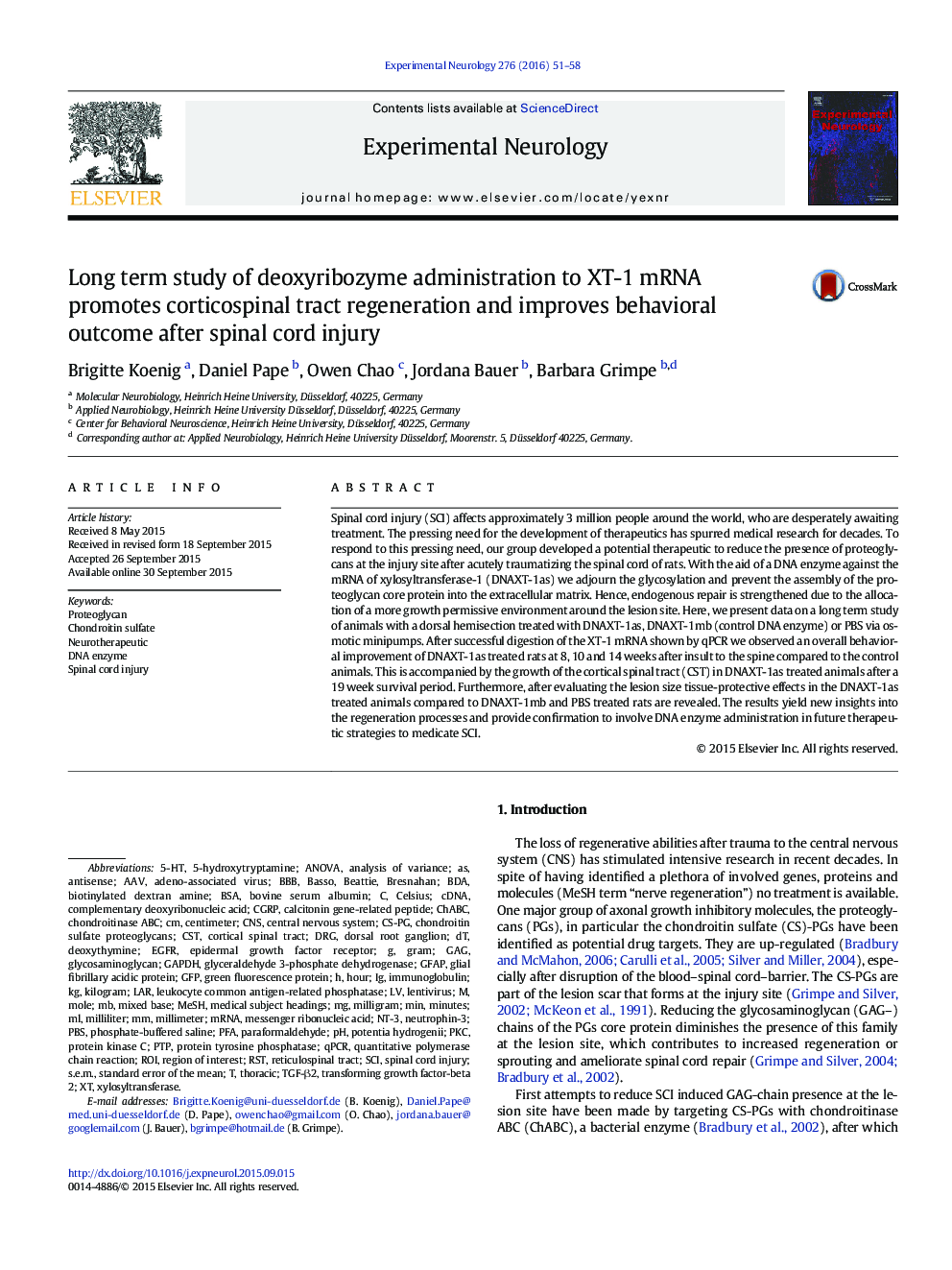| Article ID | Journal | Published Year | Pages | File Type |
|---|---|---|---|---|
| 6017329 | Experimental Neurology | 2016 | 8 Pages |
â¢Investigation of long term effects after DNA enzyme to XT-1 mRNA deliveryâ¢Reduced XT-1 mRNA level after a dorsal hemisection of the spinal cordâ¢Improved behavioral outcomeâ¢Growth of CST axonsâ¢Tissue protection after 19 weeks
Spinal cord injury (SCI) affects approximately 3 million people around the world, who are desperately awaiting treatment. The pressing need for the development of therapeutics has spurred medical research for decades. To respond to this pressing need, our group developed a potential therapeutic to reduce the presence of proteoglycans at the injury site after acutely traumatizing the spinal cord of rats. With the aid of a DNA enzyme against the mRNA of xylosyltransferase-1 (DNAXT-1as) we adjourn the glycosylation and prevent the assembly of the proteoglycan core protein into the extracellular matrix. Hence, endogenous repair is strengthened due to the allocation of a more growth permissive environment around the lesion site. Here, we present data on a long term study of animals with a dorsal hemisection treated with DNAXT-1as, DNAXT-1mb (control DNA enzyme) or PBS via osmotic minipumps. After successful digestion of the XT-1 mRNA shown by qPCR we observed an overall behavioral improvement of DNAXT-1as treated rats at 8, 10 and 14Â weeks after insult to the spine compared to the control animals. This is accompanied by the growth of the cortical spinal tract (CST) in DNAXT-1as treated animals after a 19Â week survival period. Furthermore, after evaluating the lesion size tissue-protective effects in the DNAXT-1as treated animals compared to DNAXT-1mb and PBS treated rats are revealed. The results yield new insights into the regeneration processes and provide confirmation to involve DNA enzyme administration in future therapeutic strategies to medicate SCI.
